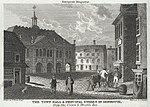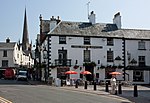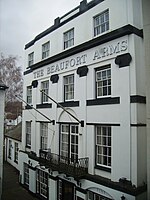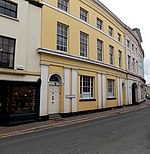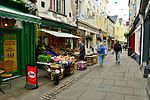Shire Hall, Monmouth
1724 establishments in WalesBuildings and structures in Monmouth, WalesGovernment buildings completed in 1724Government buildings in MonmouthshireGrade I listed buildings in Monmouthshire ... and 2 more
Grade I listed government buildingsTourist attractions in Monmouthshire

The Shire Hall in Agincourt Square, Monmouth, Wales, is a prominent Grade I listed building in the town centre. It was built in 1724, and was formerly the centre for the Assize Courts and Quarter Sessions for Monmouthshire. In 1839–40, the court was the location of the trial of the Chartist leader John Frost and others for high treason for their part in the Newport Rising. The building was also used as a market place. The Shire Hall is owned by Monmouthshire County Council and has audiovisual guides for visitors to Courtroom 1. It is currently used as a Tourist Information Centre and as the offices for Monmouth Town Council, and is open to the public in part.
Excerpt from the Wikipedia article Shire Hall, Monmouth (License: CC BY-SA 3.0, Authors, Images).Shire Hall, Monmouth
Agincourt Square,
Geographical coordinates (GPS) Address Website External links Nearby Places Show on map
Geographical coordinates (GPS)
| Latitude | Longitude |
|---|---|
| N 51.811973 ° | E -2.715404 ° |
Address
Shire Hall
Agincourt Square
NP25 3DY , Overmonnow
Wales, United Kingdom
Open on Google Maps


